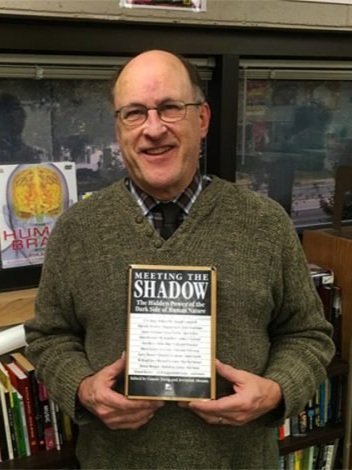The Consolation of “The Sandman”
By Bill Bornschein | April 26, 2011
A hazard of working with Ernest Becker’s ideas is that they can increase the anxiety of being trapped in the human condition. Without the comfort of traditional religion and lacking Tillich’s “courage to be,” it is possible to fall into despair. Becker acknowledges as much and advises us “to fashion something—an object or ourselves—and drop it into the confusion, make an offering of it, so to speak, to the life force.” In reflecting on Becker I am constantly brought back to a Bob Dylan lyric: “Well I can’t provide for you no easy answers. Who are you that I should have to lie?”
While personal and collective creativity may be the most effective way to assuage our anxiety, I’ve also discovered a type of vicarious consolation in author Neil Gaiman’s graphic novel series, The Sandman. Referred to by Norman Mailer as “a comic book for intellectuals” and penned in the 1990s, these comics focus on the exploits of The Endless, a family of supernaturals who are anthropomorphic personifications of the human condition. The seven siblings who comprise The Endless are Destiny, Death, Dream, Destruction, Despair, Desire, and Delirium. They represent certain constants in the human condition that transcend particular eras and cultures. Their adventures and interactions with humans are not unlike those of classic Greek mythology. The central character is Dream, also referred to as Morpheus.
An interesting feature of the series is that it employs the gods of past civilizations, Thor or Anubis for example, as characters in the story. These gods and goddesses no longer inhabit earth as in the past, having been superseded by new gods and beliefs. Rather, they have left to reside in a different realm and crop up periodically in the narrative to serve the storyline. The death of belief and what happens to the gods when this occurs is a favorite theme of Gaiman and appears again in his novel American Gods. It also features prominently in the Discworld novels of Gaiman’s friend Terry Pratchett.
It is precisely in the death of the gods and the ongoing existence of The Endless that I find consolation. Only a short leap separates the death of the Olympians and the death of contemporary gods. Traditional religion has functioned as effective culture armor precisely by connecting individuals and cultures to something bigger, something transcendent. The Sandman does this by highlighting the endless universals of the human condition and in so doing conveys a certain constant nobility in the human experience. This self-aware postmodern consciousness is quite distinct from the metaphysical certainty and security of the classic religions. Is it enough? Perhaps. In his interviews with Bill Moyers, the late mythologist Joseph Campbell observed that the shaman of former cultures had been replaced by the artist as a fashioner of the new myths. Perhaps The Sandman represents a small step, one of many, in the development of a new consciousness, an at-homeness, with the human condition.

